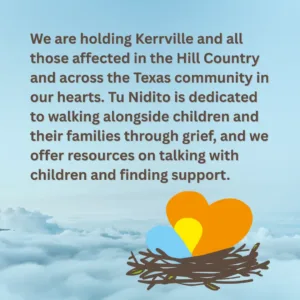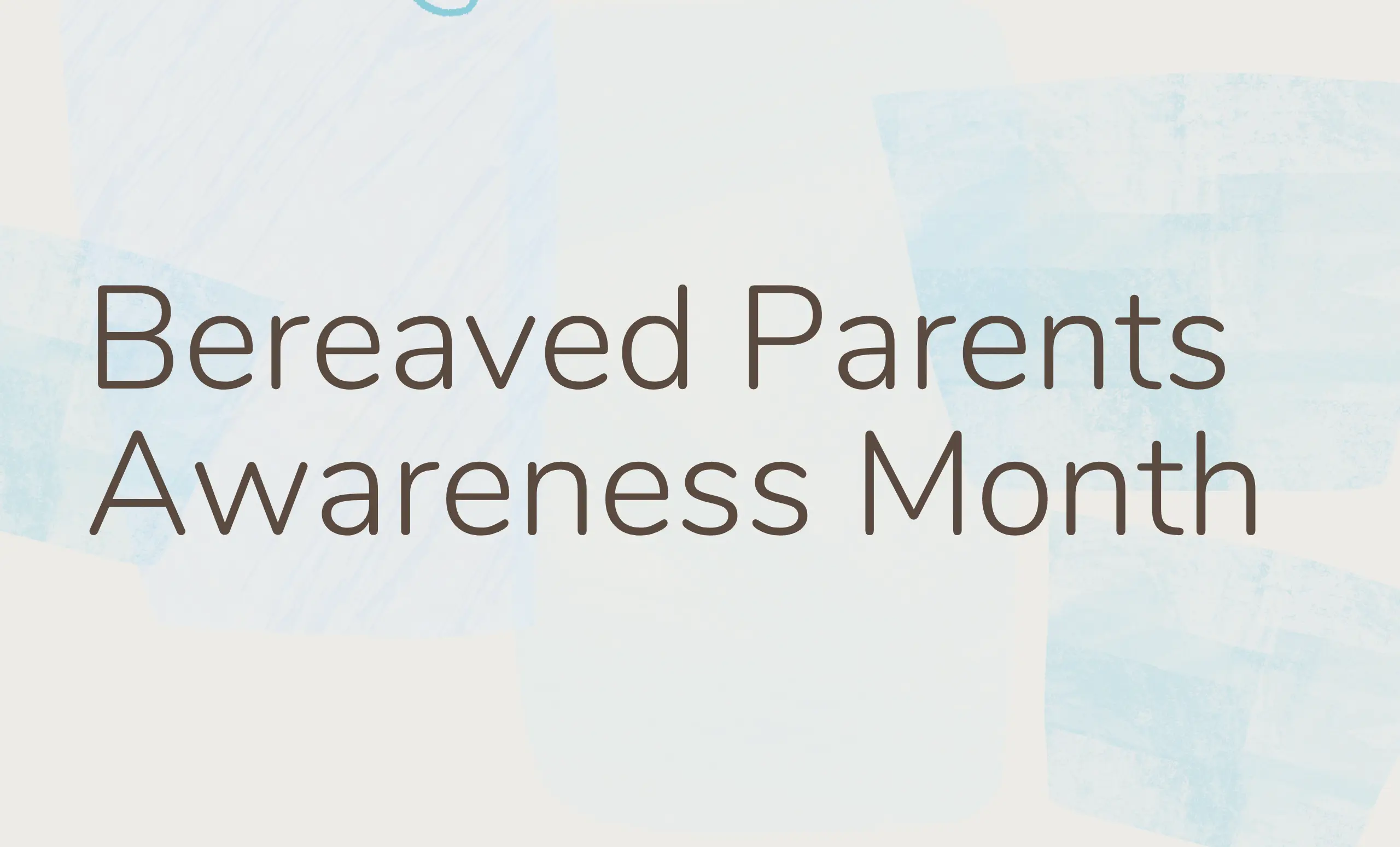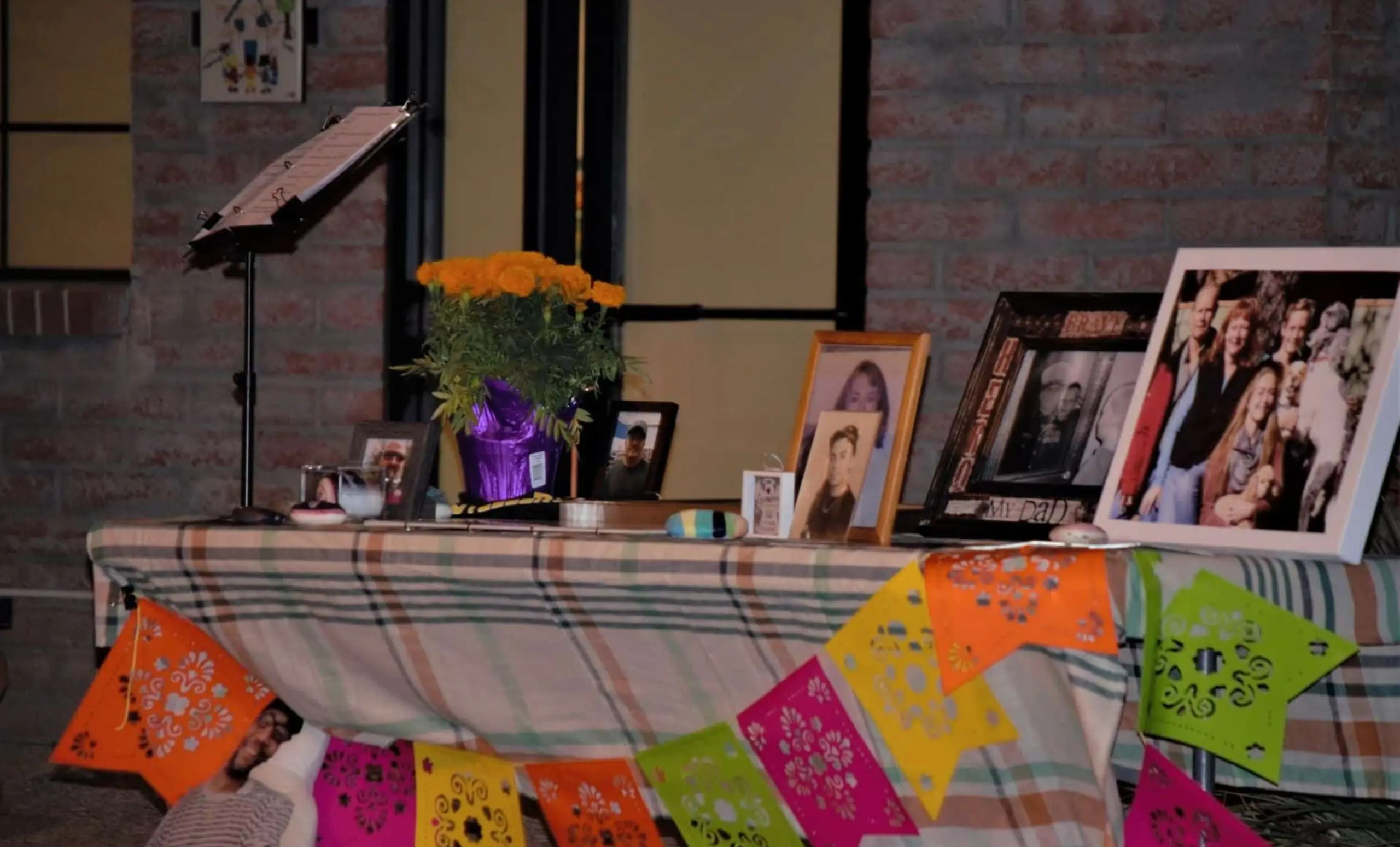At Tu Nidito, our hearts are with the families and entire community of the Texas Hill Country following the devastating floods that have impacted so many lives. As an organization dedicated to walking alongside children and families through grief, we want to offer our deepest compassion and support. In the aftermath of such tragedy, children may not always have the words to express what they are feeling. That’s why it’s important for the adults in their lives to recognize the some of the different ways in which kids express can express their grief. The best support you can offer to a child is by providing a nurturing space where their emotions can be seen, heard, and validated.
Grief in children often looks different from that in adults. Some children may cry or talk about their fears, while others might seem unaffected, distracted, or even act out. All of these responses are normal. Children need reassurance that it is okay to feel sad, scared, angry, or confused.
In moments like these, your calm presence means more than trying to come up with the right thing to say. Simply showing up, listening, and allowing your child to feel what they feel is invaluable.
Here are some common grief reactions in children after a tragic event: (keep in mind that these responses will look different based on the age and developmental stage of each child)
- Emotional responses: feeling sad/crying, feeling scared, expressing anger
- Behavioral responses: clinginess/separation anxiety, regressing in behaviors (sleeping with parent/caregiver, bed wetting, etc)
- Physical responses: changes in appetite or sleep patterns, headaches or stomachaches without a clear medical cause
- Cognitive responses: trouble concentrating, increased fears or worries, confusion
- While we can’t take away the pain our children are feeling, we can provide safety, empathy, and consistency — all of which help children begin to heal.
Tips for Supporting Your Child Through Grief After a Tragedy:
Acknowledge the Loss Honestly:
Use age-appropriate, honest language about what happened. Avoid euphemisms that may confuse children. For example, saying “She passed away” may be unclear; instead say, “She died in the flood.”
Create Space for Feelings:
Let your child know it’s okay to feel sad, angry, or scared. Name own emotions, such as “I feel really sad, too.” Children learn how to cope by watching the adults around them. If your child says “I don’t want to go to camp, I’m scared” Do not dismiss or minimize their fear. Instead, explore the fear together with curiosity and compassion. For example, “Can you tell me more about what makes you feel scared about camp?”
Maintain Consistency/Routines (with flexibility)
When so much feels uncertain, predictability provides a sense of safety. Try to maintain normalcy as much as possibly while offering some flexibility.
Children grieve more through behaviors than words. Children may not always verbalize their fears or feelings directly. Some children may find it easier to communicate their grief through art, music, or storytelling rather than talking.
Answer Questions Honestly and Reassuringly:
Children may ask the same questions over and over. Be patient and provide consistent, calm responses. Reassure them about what is being done to keep them safe now.
Limit Media Exposure:
Images and news stories about the flood may be overwhelming. Try to limit what your child sees and offer to talk with them about what they’ve heard or seen.
For additional resources, grief support, or to connect with someone at Tu Nidito, please reach out to us at [email protected] or by calling 520-322-9155. We are holding the Kerrville community in our hearts.

Related Posts
July is Bereaved Parents Awareness Month. It's a time to acknowledge and support parents who have experienced the death of a child and raise [...]
Most people think of the holiday as a time of joy, surrounded with the love of family and the warmth of the season. [...]
Dia de Los Muertos is a tradition celebrated at Tu Nidito, it is truly one of the most special events offered. It is a night [...]




